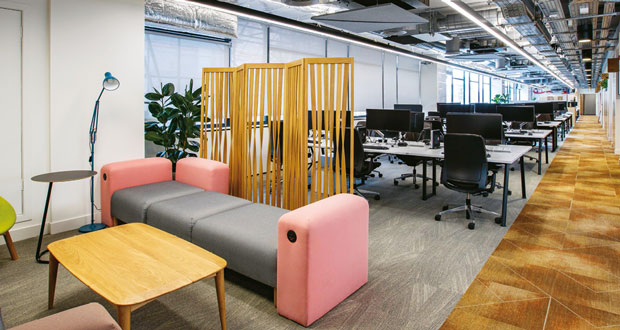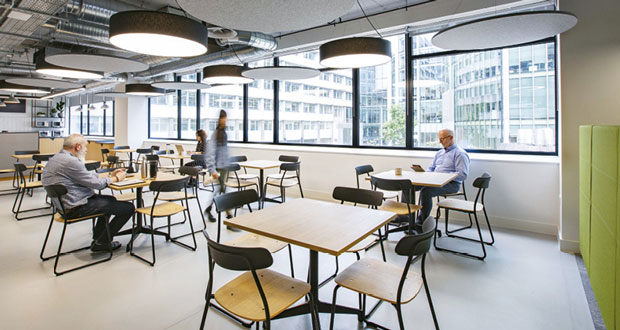 Mitakshi Sirsi, Sustainability Director at architecture and design practice WILL+ Partners and Chair of the Sustainability Community at CoreNet UK explains why the built environment needs to work together to make buildings more sustainable
Mitakshi Sirsi, Sustainability Director at architecture and design practice WILL+ Partners and Chair of the Sustainability Community at CoreNet UK explains why the built environment needs to work together to make buildings more sustainable
The extreme weather this summer and the terrible floods in Pakistan show the urgency in combatting climate change. Meeting the UK’s 2050 net zero targets may be more daunting for the built environment when you consider that approximately 70 per cent of the country’s non-residential building stock was constructed before the year 2000. In its guidance paper, ‘Delivering Net Zero: Key Considerations for Commercial Retrofits,’ the UK Green Building Council (UKGBC) argues that if energy and carbon targets are to be achieved, much of the sector will have to undergo some form of retrofit by 2050.
In its report, ‘Building to net zero: costing carbon in construction’, the House of Commons Environmental Audit Committee advises that the retrofit and reuse of buildings, which keeps the carbon locked in, should be prioritised over new build. Only where retrofit is not possible, the EAC recommends the efficient and more effective use of low-carbon building materials. However, it warns, reforms to permitted development rights appear to have created an incentive for demolition and new-build over retrofit.
Mitakshi Sirsi, a Director at architecture and design practice WILL+Partners and Chair of the Sustainability Community at CoreNet UK agrees with this synopsis.
“If someone is asking whether we should replace or retrofit, we should retrofit, yet we often don’t do that. If the building is only 20 years old and there is no problem with it structurally, why bring it down?”
As an architect with expertise in sustainable design, Sirsi is actively engaged in climate-change impact activism and dialogue, and has some valuable insights into how the built environment, design, construction and facilities management must work together to meet the challenges ahead.
SUSTAINABLE KNOWLEDGE
Mitakshi Sirsi began her career studying architecture in India and during her training, studied climatology, essentially a course in passive design and understanding the climate context of buildings.
“This got me interested in the environmental impact of what I was doing and the momentum built from there,” she says. “I’ve been lucky enough to have had a wide range of experiences – architect, sustainability consultant, policy researcher and now I’m running a sustainability team – so it’s been an interesting ride.”
Her experiences include working as a researcher for the US Green Building Council (USGBC) chapter in Chicago. This required supporting an Energy Benchmarking Ordinance bill and communicating information to representatives, which she explains, “was an interesting lesson in how to present policies to lawmakers. I realised that they need sector specialists to tell them what needs to be done. You can’t always just blame lawmakers for not getting it right as they rely on the [environmental] experts to explain what’s what.”
She moved to London to complete a masters in environmental design and since then has specialised in environmental sustainability in buildings. At Will+Partners, her and her team support projects from bid to construction, retrofit and new builds, providing design guidance on sustainability in buildings, making sure all the bases are covered on sustainability, including the value chain. She is also involved in directing management policy through research and using training as a tool to incorporate high-level strategies and certifications through the life cycle of buildings.
“It’s important to ensure that the design team is up to speed and trained in their project’s sustainability needs,” she says, “and we are there to advise on any sustainability queries that clients might have.
“We’ve also done quite a bit of work in the wellness area – for instance I was one of the researchers involved in the BCO ‘Wellness Matters: Health and Wellbeing in offices’ report. And with increasing focus on ESG we also help our clients understand and set up their ESG strategies, especially those within the built environment sector, because that is our core competency.”
CORENET
As part of her drive to promote more sustainable design through the application of research, engagement, and a focus on interdisciplinary application; earlier this year, she began serving on the operational committee board of CoreNet UK Chapter as a sustainable community lead.
“We aim to bring people from corporate real estate who are interested in sustainability together. We meet to discuss topical issues, talk about case studies and examples in an informal way, and we also aim to create a platform for knowledge transfer and sharing between people.
“We recently put together a successful roundtable event which looked at the challenges we’re facing and how industry and regulations need to catch up to each other – it’s aimed as the start of a continuing series where we address sustainability topics that are important to CoreNet UK members.”
One of the key issues discussed at the CoreNet Global UK Chapter Sustainability Roundtable event she says is that of embodied carbon and the adoption of the industry-proposed amendment to UK Building Regulations 2010, Part Z.






